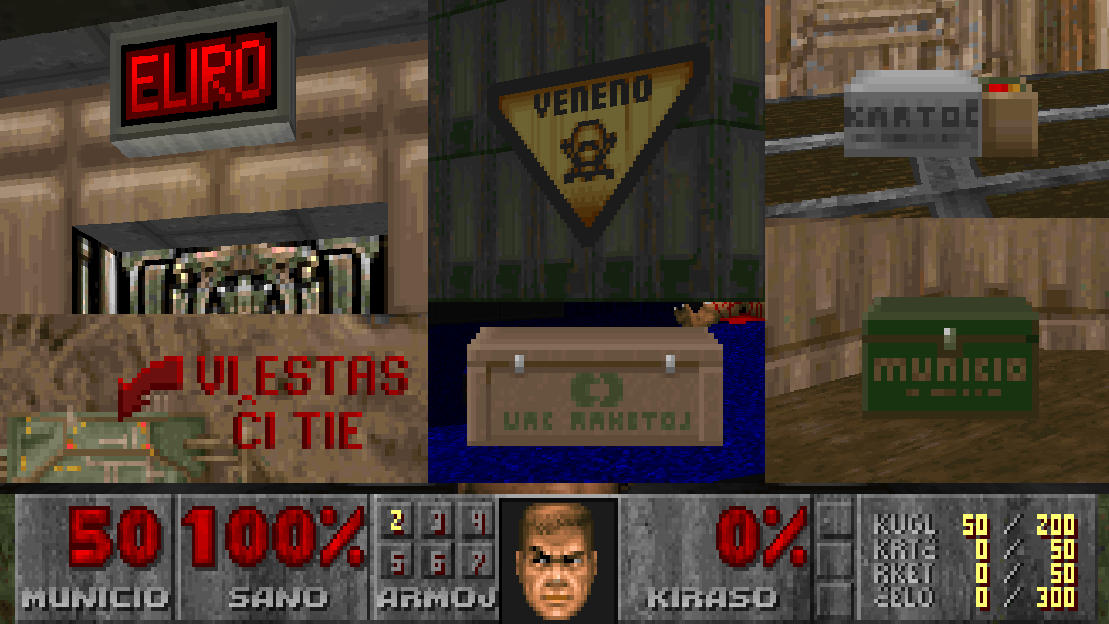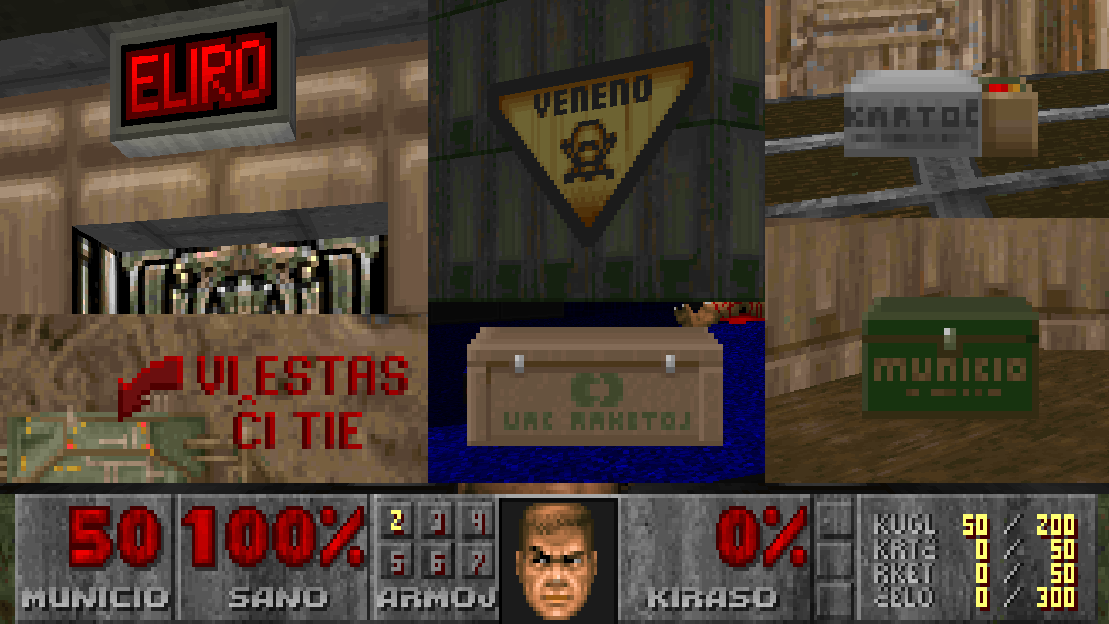The humble crossword puzzle, a grid of black and white squares waiting to be filled with words, has captivated minds across cultures and languages for over a century. It’s a universal pastime, a test of vocabulary, wit, and lateral thinking. But what happens when this beloved intellectual game meets a language specifically designed for international communication, renowned for its regularity and logical structure? The result is "Krucvortenigmo" – the fascinating world of crosswords in Esperanto. Far from being a mere translation of a popular game, Krucvortenigmo offers a unique blend of linguistic elegance, cognitive challenge, and communal engagement, deeply embedded within the global Esperanto movement.
The Foundation: Understanding Esperanto
To truly appreciate Krucvortenigmo, one must first grasp the essence of Esperanto itself. Created in the late 19th century by L. L. Zamenhof, Esperanto was conceived not to replace national languages, but to serve as a neutral, easily learnable second language for international communication. Its design principles emphasize regularity, phonetic spelling, and a highly agglutinative structure, meaning words are often built by combining roots with prefixes and suffixes.
- Regularity: Unlike many natural languages fraught with exceptions and irregular verbs, Esperanto’s grammar is remarkably consistent. Verbs follow predictable patterns, nouns always end in -o, adjectives in -a, and adverbs in -e.
- Phonetic Spelling: Every letter in Esperanto represents one sound, and every sound is represented by one letter. This "one-to-one" correspondence eliminates the spelling complexities found in English or French, making pronunciation and spelling remarkably straightforward.
- Agglutination: This is perhaps Esperanto’s most distinctive feature. New words can be formed by combining existing roots with a rich array of prefixes and suffixes. For example, from the root lern- (to learn), one can derive lerni (to learn), lernanto (learner), lernejo (school), malfacile lernebla (difficult to learn), and so on. This provides immense flexibility and a vast potential vocabulary from a relatively small set of core elements.
These foundational characteristics, while designed for ease of communication, also serendipitously make Esperanto an ideal candidate for crossword puzzles, presenting both unique advantages and interesting challenges for solvers and creators alike.
Why Esperanto and Crosswords Are a Perfect Match
The inherent design of Esperanto makes it remarkably suitable for the grid-filling demands of a crossword puzzle.
- Clarity and Precision: The regular grammar and phonetic spelling significantly reduce ambiguity. In many languages, homophones or irregular spellings can be tricky elements in crossword clues. In Esperanto, a word almost always sounds exactly as it is spelled, and its grammatical function is clearly indicated by its ending. This allows for more direct and less confusing clueing.
- Lexical Flexibility through Agglutination: This is arguably Esperanto’s greatest asset for crosswords. The ability to construct numerous related words from a single root provides an unparalleled degree of flexibility for grid creators. If a puzzle needs a five-letter word meaning "one who teaches," instruisto fits perfectly. If it needs "the act of teaching," instruado works. This makes it easier to find words of specific lengths that fit into the interlocking grid, reducing reliance on obscure words or forced definitions.
- Educational Value: For learners of Esperanto, Krucvortenigmo is an invaluable educational tool. Solving puzzles actively reinforces vocabulary, grammatical rules, and word-building principles. It encourages a deeper engagement with the language, moving beyond passive recognition to active recall and application. It’s a fun, low-pressure way to solidify understanding and expand one’s lexicon.
- Community Building: Within the global Esperanto community, Krucvortenigmo serves as a shared cultural touchstone. It’s a common activity in Esperanto magazines, at conventions, and online, fostering a sense of camaraderie and shared intellectual pursuit among speakers from diverse backgrounds.
Structure and Solving Krucvortenigmo
At its core, Krucvortenigmo follows the familiar structure of crosswords worldwide: a grid of squares, some shaded, some white, with numbered clues for horizontal (transversen) and vertical (vertikalen) entries. However, the Esperanto context adds specific nuances.
Clue Types:
Esperanto crosswords employ various clue types, similar to their English counterparts:
- Definitions/Synonyms: The most straightforward, e.g., "Malsama ol bona" (Different from good) for malbona (bad).
- Antonyms: Clues asking for the opposite of a given word.
- Wordplay: While less reliant on complex phonetic tricks due to Esperanto’s consistent spelling, clever wordplay, anagrams, and indirect references are still common.
- Grammatical Cues: Crucially, clues often hint at the required grammatical ending. A clue for a noun might implicitly suggest the -o ending, while a clue for an adjective would point to -a. For example, a clue asking for a "quality" might lead to an adjective, while "a thing having that quality" might lead to a noun.
Tips for Solvers:
- Start with the Obvious: Look for short, unambiguous clues, or those where you immediately know the answer. These initial entries can unlock crucial letters for more challenging words.
- Mind the Endings: Always consider the required grammatical ending. If a clue asks for an action, the answer will likely be a verb (ending in -i). If it asks for a description, an adjective (-a). This can significantly narrow down possibilities.
- Think in Roots and Affixes: Given Esperanto’s agglutinative nature, try breaking down potential answers into their root, prefix, and suffix components. If a clue describes "one who writes," think skrib- (write) + -isto (one who does) = skribisto.
- Utilize a Dictionary: Even experienced Esperantists keep a good Esperanto dictionary handy. It’s a tool for learning, not cheating, especially when encountering less common roots or derivations.
- Context is Key: Some clues might reference well-known figures in Esperanto history (like Zamenhof), common Esperanto publications (Monato, Kontakto), or cultural aspects unique to the movement. Familiarity with these can be a great advantage.
The Creators and the Community
Krucvortenigmo are often crafted by dedicated Esperantists – teachers, writers, and puzzle enthusiasts – who understand the nuances of the language and the art of clue construction. They appear regularly in prominent Esperanto publications such as Monato (a monthly international news magazine), Kontakto (a magazine for younger Esperantists), and various national Esperanto association newsletters.
The digital age has also brought Krucvortenigmo online. Websites, forums, and even dedicated apps now host interactive puzzles, allowing a wider audience to engage with them. Online communities often share solutions, discuss tricky clues, and even create their own puzzles, further strengthening the communal bond. At international Esperanto congresses and youth gatherings, physical Krucvortenigmo sessions are popular, serving as both a relaxing pastime and an informal language learning opportunity.
Challenges and Nuances
While Esperanto’s design offers many advantages for crosswords, it also presents unique challenges:
- Limited "Trickiness": The very regularity that makes Esperanto easy to learn can sometimes limit the scope for truly obscure or pun-laden clues that are common in English crosswords. The lack of irregular spellings, for instance, means fewer opportunities for cryptic clues based on phonetic misdirection.
- Vocabulary Depth: While agglutination creates flexibility, the core vocabulary of Esperanto is still smaller than that of languages like English or French, which have evolved over millennia with vast historical influences. This can sometimes make filling very large or complex grids challenging without resorting to less common derivations or highly specific terms.
- Cultural Specificity: As mentioned, some clues might rely on knowledge of internal Esperanto culture. While enriching for veterans, this can be a barrier for newcomers who haven’t yet immersed themselves in the movement’s history and figures.
- Balancing Difficulty: Creators must skillfully balance the need for accessible puzzles for learners with challenging ones for advanced speakers, ensuring that Krucvortenigmo remains engaging for the entire spectrum of the Esperanto community.
The Educational and Cultural Significance
Beyond being a mere game, Krucvortenigmo holds significant educational and cultural value within the Esperanto sphere:
- Active Language Acquisition: It moves learners from passive understanding to active recall and manipulation of the language, crucial for fluency.
- Cognitive Engagement: Like all crosswords, it hones problem-solving skills, logical deduction, and pattern recognition.
- Cultural Reinforcement: By incorporating references to Esperanto history, literature, and current events, Krucvortenigmo helps to reinforce a shared cultural identity and knowledge base among speakers worldwide.
- Promoting Playfulness: It demonstrates that Esperanto is not just a tool for serious communication but also a vibrant, living language capable of supporting rich cultural activities and playful intellectual pursuits.
The Future of Krucvortenigmo
As technology continues to advance, the future of Krucvortenigmo looks bright. Digital platforms will likely offer more interactive and customizable experiences, perhaps even incorporating features for collaborative puzzle-solving or AI-assisted clue generation. The growing interest in language learning worldwide, coupled with Esperanto’s increasing online presence, could introduce Krucvortenigmo to an even wider audience. As the Esperanto community continues to evolve, so too will its crosswords, adapting to new linguistic trends and cultural references while retaining their fundamental appeal.
Conclusion
Krucvortenigmo is more than just a pastime; it’s a testament to the ingenuity of Esperanto’s design and a vibrant expression of its community’s culture. It stands as a compelling example of how a constructed language, often perceived as merely functional, can foster a rich ecosystem of intellectual games and cultural activities. For the curious linguist, the avid puzzler, or the dedicated Esperantist, diving into the world of Krucvortenigmo offers an engaging, enlightening, and deeply rewarding experience – a true celebration of words, logic, and a shared global language. It is a reminder that even in the pursuit of serious communication, there is always room for the delightful challenge and communal joy of a well-crafted puzzle.


